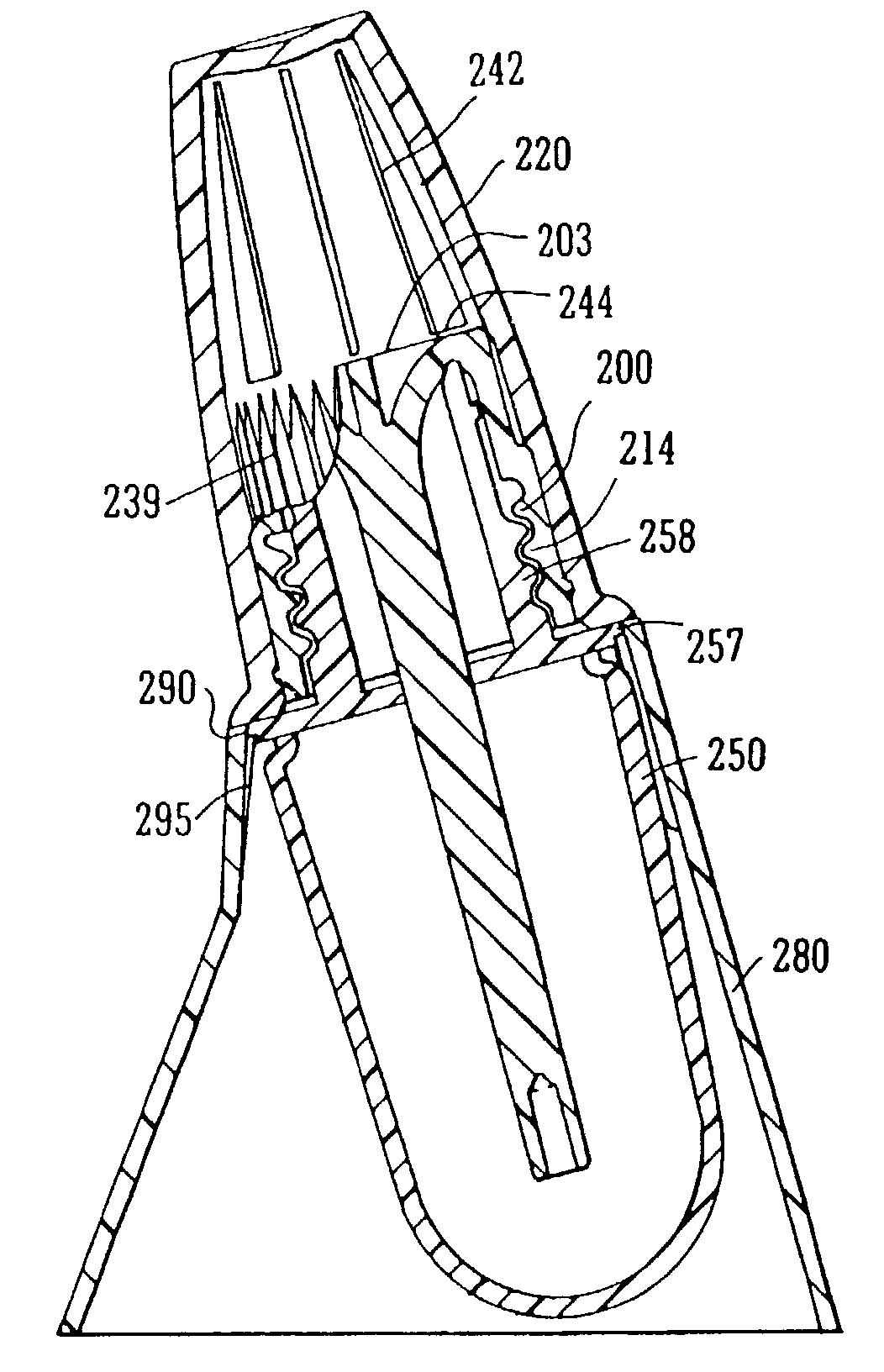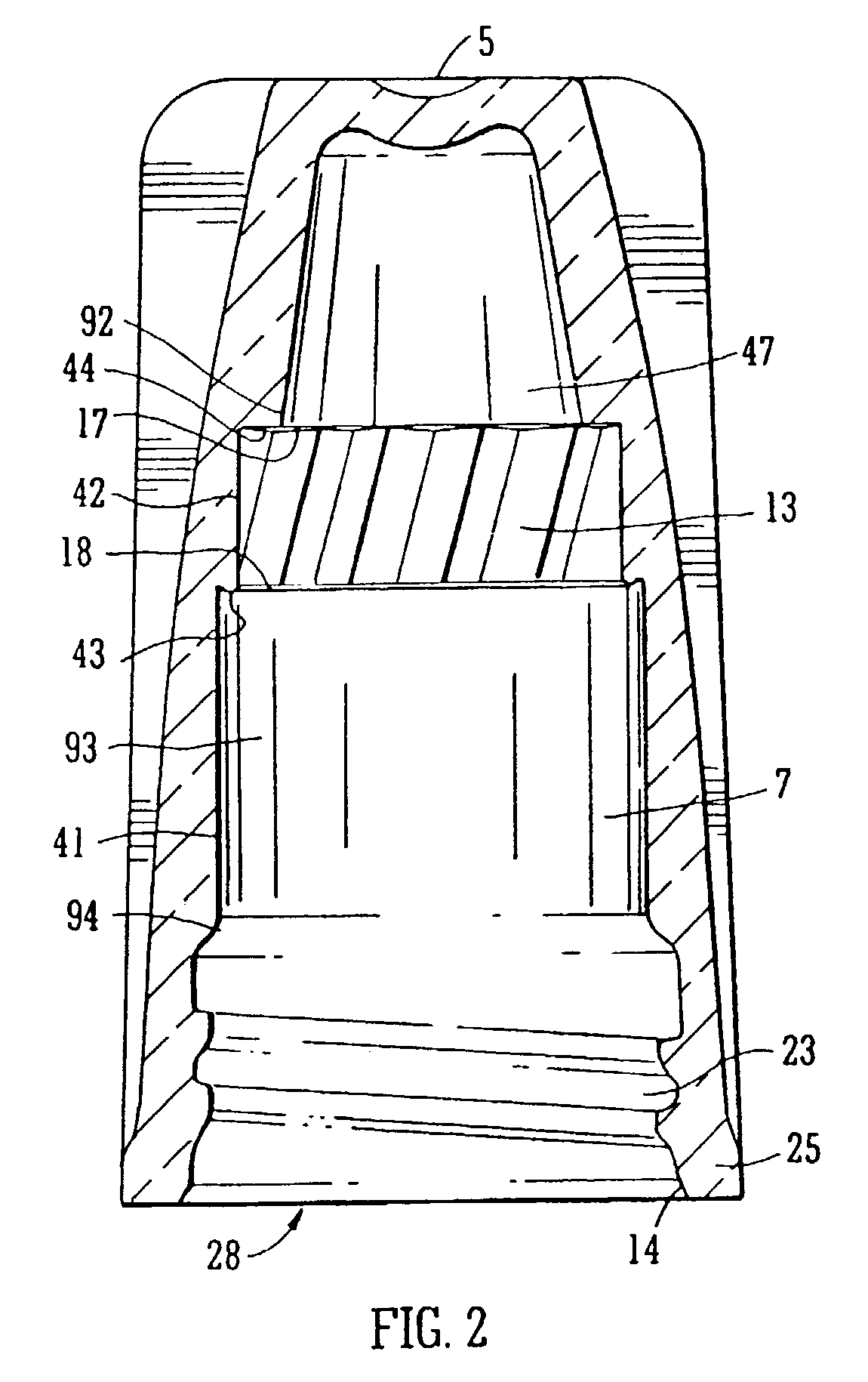Applicator, applicator cap and a container having an applicator cap
- Summary
- Abstract
- Description
- Claims
- Application Information
AI Technical Summary
Benefits of technology
Problems solved by technology
Method used
Image
Examples
Embodiment Construction
[0115]The invention will now be described with reference to the accompanying drawings.
[0116]FIG. 1 shows an exploded view of an applicator cap 1 for use with a container 2.
[0117]The applicator cap comprises an assembled arrangement of a cap 3 and applicator 8. The cap 3 comprises a cap body 4 with a top end in the form of a top wall 5 with an endless side wall 6 depending therefrom. The top wall 5 and the side wall 6 form a housing 7 for receiving a neck 14 of the container 2. The side wall 6 is generally in the form of the skirt creating the housing with circular cross section.
[0118]The applicator 8 has an applicator head 9 with an applicator stem 10 projecting from it. The applicator has a free end 11 for applying product from the container 2 to the desired surface on the substrate. In the embodiment shown the free end 11 is not adapted for any particular mode of application. The head 9 acts as a plug while the cap 3 acts a socket receiving the head 9 within the housing 7.
[0119]A ...
PUM
 Login to View More
Login to View More Abstract
Description
Claims
Application Information
 Login to View More
Login to View More - R&D
- Intellectual Property
- Life Sciences
- Materials
- Tech Scout
- Unparalleled Data Quality
- Higher Quality Content
- 60% Fewer Hallucinations
Browse by: Latest US Patents, China's latest patents, Technical Efficacy Thesaurus, Application Domain, Technology Topic, Popular Technical Reports.
© 2025 PatSnap. All rights reserved.Legal|Privacy policy|Modern Slavery Act Transparency Statement|Sitemap|About US| Contact US: help@patsnap.com



